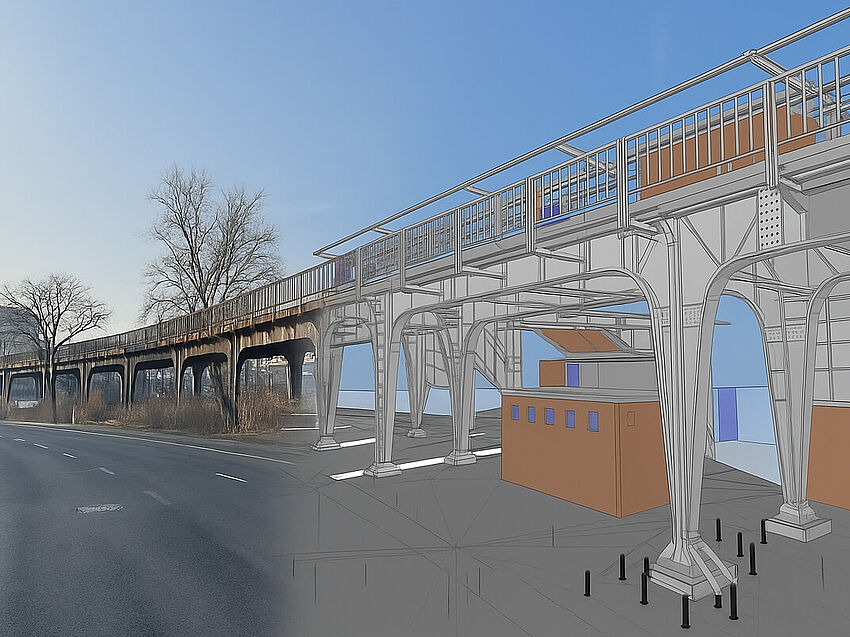Reactivation of the Siemensbahn: KREBS+KIEFER relies on ALLPLAN
Building Information Modeling (BIM) characterizes the construction industry and is increasingly being required globally for the contracting of construction services. The aim is to deliver construction projects efficiently. This requires transparency, good communication, and cross-discipline cooperation. The focus is on the digital building model, which contains all information from all disciplines.

The challenge
BIM is not software, but rather is a working method for the construction industry where people, processes, and tools interact in a goal-oriented manner.
Theoretically this sounds simple, but it presents a major challenge for planners. Exchanging CAD data, in particular, has proven to be faulty in the past with conventional working methods. Exchanging different file formats of various software between disciplines has often led to losses of information.
The solution
A neutral data format was developed to ensure a smooth BIM process: the Industry Foundation Classes (IFC) format. In the following ten sections, read about the powerful tool the planners at Stücheli Architekten from Switzerland use and how they efficiently process BIM projects with the help of the IFC data exchange.

Summary
Data exchange has now taken on a central role due to the change in cooperation in building projects associated with BIM. The actual added value of BIM can only be generated if the openBIM method is used. For only if cross-software data exchange is possible can the individual models of different disciplines be compared with each other in the central BIM model.
A truly important milestone was set for openBIM with the start of the development of IFC in 1997. IFC has no longer been just a topic for the early adopters for quite some time.
Conclusions
IFC has established the implementation of standardization in everyday planning. The relatively new format is not a universal cure for stumbling blocks in the BIM working method, but the constant and rapid continued development through the neutral organization buildingSMART, in cooperation with software manufacturers and experts from practice, supports the BIM working method better and more specifically. Anyone today who does not have an IFC interface and thus is unable to exchange their digital models across software will be less competitive in the future.



